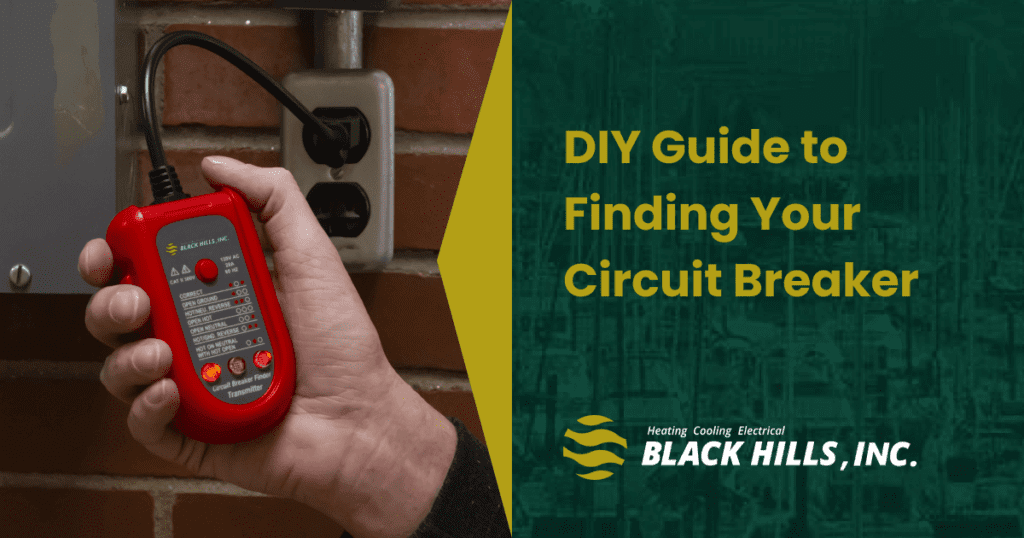You’re probably somewhat familiar with the breaker panel in your home. This essential piece of safeguarding electronics is basically a big switch made up of smaller switches connected to every circuit in your home. But how do you go about finding a circuit breaker, specifically one that’s connected to a light, without turning each breaker off one by one?
Sure, it’s easy to spot the main breaker, and with a little experience, you can tell single-pole from double-pole breakers. There is, however, a device called a circuit breaker finder that can quickly locate the circuit breaker that a particular light or outlet is connected to.
How a Circuit Breaker Finder Works
A circuit breaker finder isn’t one of the most common DIY tools. Nevertheless, there are many of them available on the market. The device consists of a transmitter that you plug into a standard power outlet or light socket.
Once plugged in, it scans the circuit breaker box. A low-power electrical signal and tone is sent through the circuit. The receiver, which is placed at the breaker box, will beep and flash when it receives an electric signal; all you need to do is pass it over the corresponding circuit breaker.
How to Use a Circuit Breaker Finder
To use, you must first install the battery in the receiver unit. The battery compartment typically has a sliding cover and fits a 9-volt battery. Next, adjust the receiver according to the manufacturer’s instructions, ensuring it’s set to maximum sensitivity. To go about finding a specific circuit breaker, follow these next steps:
- Test the Device: To verify the receiver and transmitter are communicating, plug the transmitter into a wall outlet. It will light up if it’s receiving power. Then, place the receiver nearby. If it’s picking up the signal, it will light up or beep.
- Match the Circuit and Breaker: With the main breaker box door open, hold the sensor tip of the receiver at a right angle to the circuit breaker. Move it up and down while lowering the sensitivity. Only one breaker should trigger a response. If you’ve found the correct breaker, you can switch it off. Then, try to turn on the light switch connected to that circuit to verify no current is flowing to it.
- Circuit Breaker for a Light Switch: A light fixture presents a challenge because the circuit breaker finder must plug into a standard outlet. But you can purchase a keyless socket adapter inexpensively at a local home improvement or hardware store.
Using the adapter is slightly different than plugging in the transmitter directly. To do this:
- Turn the wall switch for the light fixture off.
- Remove one of the light bulbs.
- Screw the adapter into the empty bulb socket.
- Plug the transmitter into the keyless socket adapter.
- Turn on the light switch.
- Now, the transmitter should work just the same as if it were plugged into an electrical outlet.
Who Uses the Device?
Circuit breaker finders are useful tools for various professionals and individuals involved in electrical work or troubleshooting. Commonly used by electricians and safety inspectors, this device can also benefit everyday samaritans who are looking into upgrading their home’s electrical work. With it being a relatively inexpensive tool, it allows more people to regulate their electricity before having to call in the professionals.
Should I Buy or Rent a Circuit Breaker Finder?
A circuit breaker finder is usually available for around $30 to $50. A GFCI outlet analyzer is often included, so you get more for your money. However, it’s not impossible to find rentals at a tool lease outlet or a home improvement center. But you’ll probably spend around $10 to $15 per day doing so, which can work for just a one-time project.
How Long Will the Device Last?
A circuit breaker finder will last many years if properly cared for. Make sure to operate it as designed and follow any instructions included with the product. Misuse can damage its circuitry. When storing it for the long term, keep the tool in a dry location and remove the battery to avoid leakage. If the unit doesn’t work, try replacing the battery; then, if it still doesn’t respond, you’ll likely need a new one.
Finding circuit breakers is a task a DIYer can do. After all, you’re just looking for the circuit a light or device is connected to.
But if your electrical panel needs repairs or an update, leave the hard work to the professionals at Black Hills. We’re here for any customers in the Olympia area who need help with their electrical system. To request service, contact us online or call 888-619-0086 today!

